When you wanted to recruit someone twenty-five years ago, you would have collected all of their information via a paper-based system. Your HR team might have spent most of their time sorting through resumes and noting ideal candidates while coordinating interview times with different people across the organisation.
In twenty-five years, HR technology has come a long way, yet many organisations continue with arduous, manual processes. Today’s Human Experience Management (HXM) applications incorporate technologies like artificial intelligence (AI) for selecting ideal candidates from vast numbers of online applicants and providing valuable data-borne insights to support your hiring decisions.
Technology for recruiting and onboarding is about more than just efficiencies in business processes. The experience of candidates during those processes can influence the likelihood that someone will accept (or decline) a position with your company.
Find the ideal platforms for sourcing candidates
Do you know which platform you have had the most success sourcing candidates from? If you answered ‘No’, you might benefit from a platform that measures the various steps in the process and highlights the websites or methods that have historically had the most success.
These platforms retain historical information about your candidates and employees, such as information collected during the hiring process, when they started work and even data on their performance. It can show you which sites you found your current workforce, collate data on where the latest candidates came from and make sourcing suggestions.
For example, while you might receive more applications from Seek job ads than any other source, your most recent hires may have come from a LinkedIn campaign. Employees with the highest completion rates for onboarding or training may have come from another source. With this level of insight and information on hand, you may decide to refocus your talent sourcing strategies.
As many businesses have moved beyond office life and continue to embrace a hybrid working environment, talent management software can support candidate sourcing from larger geographical areas. Moreover, such software makes it easier for candidates to find you by optimising and automatically posting your job ads on multiple search engines with the touch of a button.

Save time with Artificial Intelligence
AI and automation significantly reduce the tedious recruiting tasks traditionally carried out by HR representatives or managers. After posting a job ad, you might receive more applications than you have the time to sort through.
Automation like this helps manage the influx of resumes and assists you with recruitment. If you seek specific skills or a certain level of experience for a role, AI can exclude resumes that do not align with your preferred criteria.
Once you have a clear view of the candidates you want to interview, you would hate the idea of them withdrawing their interest due to radio silence from your end. Today’s intelligent applications can send messages to applicants, so they feel engaged with the hiring process and are less likely to withdraw their application while waiting to hear from you.
Your HR department can also leverage AI to assist with lining up interviews. Coordinating times between candidates, HR leaders, and relevant managers can become frustrating. It worsens when cancellations and requests to reschedule come into the mix. AI helps by checking everyone’s calendar and recommending ideal times to arrange an interview.
Automating these tedious recruiting processes saves time and energy, leaving you to focus on finding and securing the best possible candidate for the job.
Make data-based hiring decisions
More companies collect a greater amount of data every day. With so much information on your business, staff and customers, why not leverage that data for your recruitment initiatives?
Data-driven decisions made from workforce data take the guesswork out of recruiting. I am sure you have experienced this before: you have a few candidates you like but are unsure which one will be the best fit. You make a ‘gut-based’ decision and hire the person that impressed you the most or that you had a connection with. Even with the best checks and balances, you may come to realise they do not have the right traits for the job or fail to gel with the culture of your company.
Talent management platforms analyse more than just resumes. They also scour a person’s LinkedIn profile or gather information about their previous companies to determine whether they will be the right fit – regarding their skills and your culture. For example, one candidate may have taken the same training course or worked at the same company as one of your successful employees. You might have missed this small piece of information, but your data platform can help find these links.

Improve the candidate experience
Talent management platforms play a significant role in improving the candidate experience. When candidates can easily apply for jobs, submit their resumes and receive timely and appropriate communications, the process becomes simpler and more convenient. In addition, when employers use technology to manage their hiring processes, it allows them to better communicate with candidates and assess their suitability.
Talent management smoothens the application process for candidates by automating tasks and providing convenient digital experiences. Below are some of the ways technology improves the candidate experience:
- Intuitive application processes: A robust talent management system provides candidates with flexible application options and makes it easy to apply for a position.
- Consistent communication with candidates: Talent management software delivers a platform to communicate with candidates as they reach out with questions.
- Paint a transparent picture of your company: Rather than relying on one job ad that may not provide people with all the information they need, a talent management platform updates your career page with information on your company culture and employee experiences.
A good strategy for retaining employees starts with a good recruiting process, so you need technology that enables you to deliver excellent experiences.
How Tambla supports workforce recruitment
Are you looking to improve workforce recruitment and retention or better manage your pool of candidates?
Tambla’s team of experts can deploy a talent management solution that enables you to optimise the recruitment process and focus on finding the right fit for your business. Visit our website to learn more about our SAP HXM workforce solutions and services.




